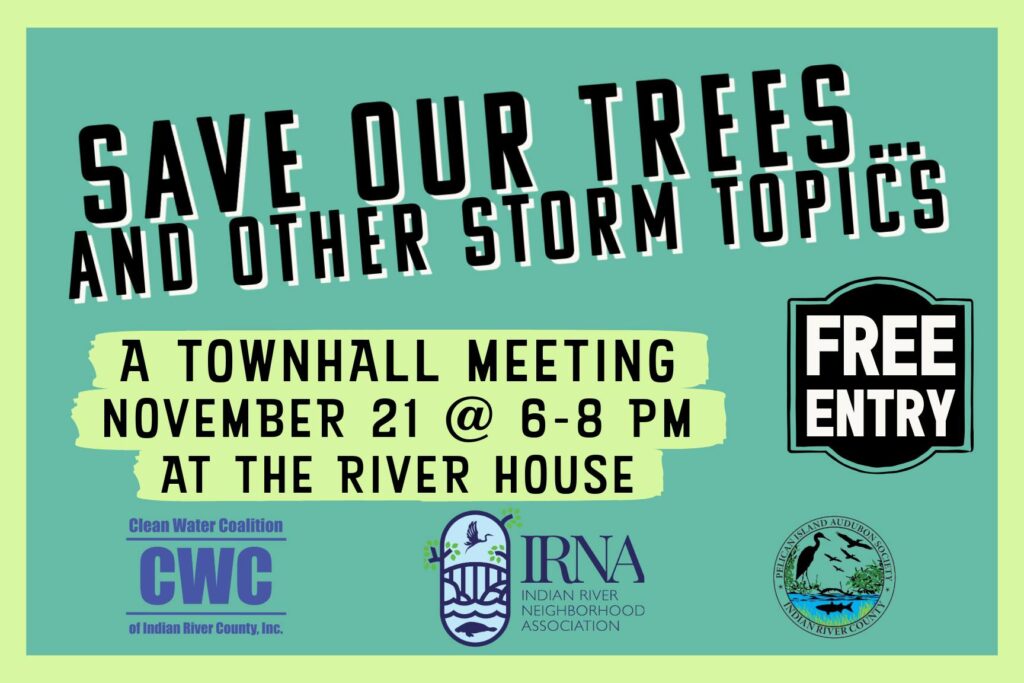The worst of the tornado-damaged tree limbs in Central Beach and elsewhere have been cleaned up and mulched. But what should homeowners do now?
Experts suggest waiting two or three months before doing anything major to the remaining trees and vegetation, to preserve limbs or even whole trees that are still alive and have a good chance of surviving.
For more tips about what to do, Indian River County Commissioner Laura Moss has organized a Tree and Landscape Recovery Workshop for 6 p.m. to 8 p.m. today (Nov. 21) at the River House, 305 Acacia Drive. Admission is free. Speakers include Vero Beach Mayor John Cotugno, arborist Matthew Simoni and Dr. Richard Baker, president of the Pelican Island Audubon Society.
Baker is a Professor Emeritus at the University of Florida and was the former director of UF’s Florida Medical Entomology Laboratory. Moss and Baker have collaborated before on two award-winning native landscaping projects – one at City Hall, and the second at the County Administrative Complex.
“When I saw the aftermath of the tornadoes, I was in shock. And the trees still are in a state of shock,” Moss said. “They need what we all needed after the storm – some TLC. It can take months to learn whether or not you need to replant. Patience is the key here.”
Attendees at the Nov. 21 event will receive free potted native cypress and southern live trees. Those unable to attend may obtain free trees at the Audubon House, 195 Oslo Road, open 9 a.m. to 11 a.m. Mondays, Wednesdays and Saturdays.
Before removing or grooming trees, homeowners also will want to be sure they are not violating City of Vero Beach codes, Moss said. Sections 71 and 72 of the city code protects “historic trees” and trees that create canopies over five beachside streets.
A “historic tree” is defined as an existing live oak with a Diameter at Breast Height (DBH) of 36 inches or greater. Homeowners may only remove a healthy historic tree with the approval of the city’s Planning and Zoning Board and may require the homeowner to mitigate the removal by paying a fee to the city to replace a similar-size and variety tree elsewhere.
A separate ordinance protects these city “canopy streets”: Sandfly Lane, Lady Bug Lane, Painted Bunting Lane between Club Drive and Ocean Drive, Camino Del Rio (east and west) and Eugenia Road east of A1A.
These trees may not be removed or even pruned unless a city engineer determines them to be a safety hazard.

